From supermarkets to fashion stores, shops employ clever retail psychology tricks to get you to spend more money. Stores are carefully engineered and every aspect of the design has a particular purpose – from the background music and product placement to the colours chosen.
The stores can’t be happy until they get their hands on your wallet – so how do these guys make it happen? Let me tell you some of the psychology tricks retailers have up in their sleeves.
Psychological tricks retailers use to make you buy more
It’s said that only 5% of our buying decisions are made consciously. Therefore, retailers have the subconscious 95% to play tricks on. To become a savvy shopper and cut your spending, start by recognising these 14 subtle yet common retail psychology tricks.
1. Clever product placement
“Eye level is buy level.” Your eyes are what you shop with, and they aren’t spared from supermarket tricks. Eye level is where the items supermarkets want you to buy the most are located. You typically find brand items staring you right in the face in grocery aisles, with cheaper supermarket brands closer to the floor level. The brands even pay more for eye-level product placement, relying on your laziness to look up or down to find a better deal.
If you are a parent, you might have noticed that the lower shelves often have items that children are attracted to. In this area, there are plenty of brightly coloured and appealing items. This means it’s easier for children to spot them – and of course, beg their parents to buy these for them.
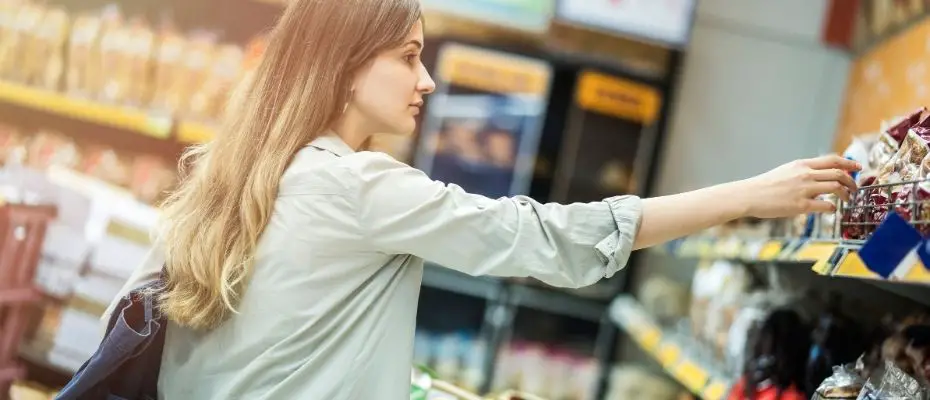
2. Visual pricing tactics
Stores often use various retail psychology pricing tricks to make you spend more money. Here are a couple of common examples:
- Reduce the left digit by 1: Our brain encodes numbers so quickly that a smaller first digit is enough to make the price seem much smaller: £9.99 feels like a lot less than £10.
- Choose numbers with fewer syllables: Although people don’t usually say prices out loud, studies show that people perceive phonetically shorter prices as being cheaper. Even if two prices have the same written length (e.g. £27.82 vs. £28.16), the phonetically longer price gets associated with a higher price.
- Remove the comma: Research shows that removing commas makes a price seem lower. For instance £1,699 vs. £1699.
3. Cross-selling
Retailers know that if a customer loves one item, they’re more likely to buy another that matches or complements it. This phenomenon, known as the Diderot effect, is often utilised through cross-selling strategies.
Fashion brands do this a lot by using the same patterns and fabrics in different clothes. For example, you might see the same print on pants, a top, and a jacket. If you really like the pants, you’ll probably want the top too. The same goes for combining things like clothes, accessories, and jewelry.
Cross-selling is also common in online shopping. Think about Amazon, for instance. They often show you items related to what you’re planning to buy or bundles of related items (like a camera, a case, and a memory card) sold at a lower price than if you bought them separately. Sounds like a good deal, right? Well, only if you were already planning to buy all three in the first place.
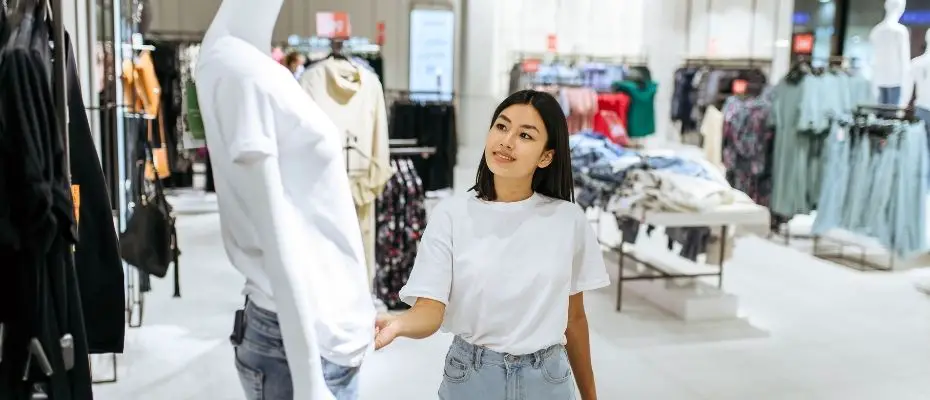
4. Store layout
A smart store layout and frequent changes are some of the key retail psychology tricks that stores utilise to make us buy more.
Many shops, supermarkets especially, will move products around regularly so that you are forced to scan the shelves and see more items you want to buy. They also place daily essentials, such as milk and bread, at the end of the store to force you to walk through the shop. This increases the likelihood of you making more impulse purchases.
Another great example is maze-like stores. You’re probably thinking about Ikea already! They use something called the “Gruen effect” — the simple idea that exposing you to more products will encourage you to buy and spend more.
Related: 6 psychology tricks Ikea uses to make you buy more stuff
5. False sense of urgency and scarcity
Retailers know that you don’t want to miss out on a deal. They will use phrases like “only two left” or “limited-time offer” to persuade you to buy more. Our brains are wired for scarcity, so we feel an urgency when these messages come our way and it is hard to resist buying before they’re gone!
Anything limited creates a sense of urgency and primes us to act quickly. Sales are by definition limited. Online stores also use this retail psychology trick when they say the stock is limited and other people are watching the same item. Hotel websites, such as Booking.com, are prime examples of this. It works because most of us want to avoid the pain of losing something. If you are interested in learning more, read my article specifically covering ecommerce psychology tricks.
These items may be tempting to buy on the spot, but while you’re there, consider if it’s really worth opening your wallet for.
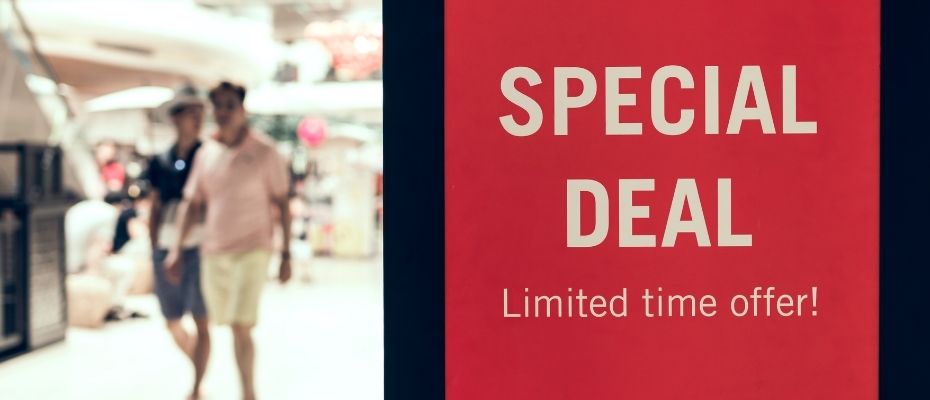
6. Buy one, get one free
Who wouldn’t love a good bargain? Science shows that our brains even experience pleasure at the prospect of a bargain. However, BOGO (buy one, get one free) deals compel you to buy more than you normally would. The prices are usually high enough to cover the “free” item.
Now, if you’re already planning to make a purchase and a second one is free, by all means, take the freebie. But if you find yourself suddenly justifying the purchase of unnecessary new shoes because of a BOGO deal, the retailer has done a good job to get to trick you!
7. Social proof
Social proof is the concept that people will follow the actions of the masses. In short, you are more willing to do something if others do it.
Let’s think about a restaurant, for example. The reason you’re tempted to visit a crowded restaurant instead of an empty one is that you assume the empty restaurant isn’t as good. After all, if they served good food, people would be in them, right? This is social proof in action. Even if the empty restaurant had better food and cheaper prices, since more people are in the other one, the assumption is they’re better.
Related: 11 Restaurant psychology tricks that make you spend more
Reviews are another great example of this retail psychology trick. Online stores in particular rely on strategically-placed reviews and testimonials on a website to convince you to make a purchase.

8. Sizable shopping carts
Did you know that shopping carts were designed in the late 1930s to help customers make larger purchases more easily? Since then, the sizes of shopping carts have increased massively.
When you have a nice big cart waiting for you at a supermarket entrance, the store encourages you to fill it. In fact, experts say a cart that’s double the size can lead shoppers to buy 40% more than they may actually need. Having a couple of items in a shopping cart that could fit a baby elephant can make you feel like you’re not buying enough. Therefore, try grabbing a basket instead and limiting what you buy to what you can carry.
9. Appeal to the senses
Appealing to our five senses is a retail psychology trick that stores use to trigger an emotional response in consumers. Here are a couple of examples of how this can make you spend more:
Sight
The visual sense is by far the one that retailers activate most often in terms of design, colour, style and lighting. A good example of this is visually appealing store windows or sale signs that invite you to walk into a store.
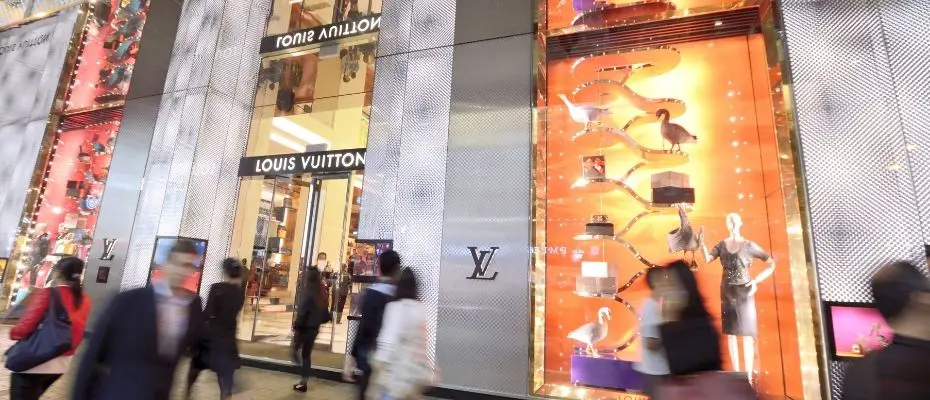
Sound
Another major sense that stores try to manipulate is your hearing. Quiet, calm and slow music encourages shoppers to spend more time in the store. Conversely, faster music speeds up the heart rate, moving people out of fast-food restaurants quicker.
Touch
Physically touching a product increases the likelihood of you wanting to buy it. That means that stores are structured to encourage you always to pick things up. That might mean an end cap filled with items, or even a cluttered-looking shelf that you have to sift through. Touching can also lead to lingering and prolonged feelings of ownership, particularly in clothing stores when you usually physically try the items on to assess them.
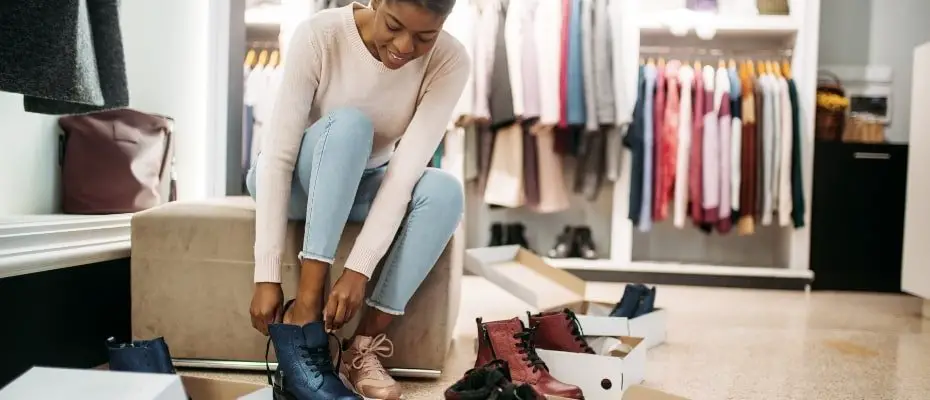
Taste
The sense of taste is something that food and drink retailers in particular use to stimulate consumers’ taste buds. Stores give out free samples to trigger your appetite, which makes you shop hungry and buy food you don’t need.
Some non-food retailers also aim to stimulate your sense of taste. For example, high-end and luxury retail stores often offer customers a complimentary cup of coffee or a glass of champagne. A recent study even shows that consuming caffeine before or during shopping can make you spend more money!
Smell
Your sense of smell is a strong sense that easily triggers emotional attachments. Studies have even shown that people can remember a scent with 65% accuracy after one year. Emotional connections are the reason why Starbucks coffee shops are filled with the aroma of pumpkin spice during autumn and gingerbread flavours over Christmas. But it’s not just about memories associated with smells. For example, bakeries and supermarkets often place flowers and baked goods near the entrance. Their appealing smell activates your salivary glands, making you more likely to purchase on impulse.
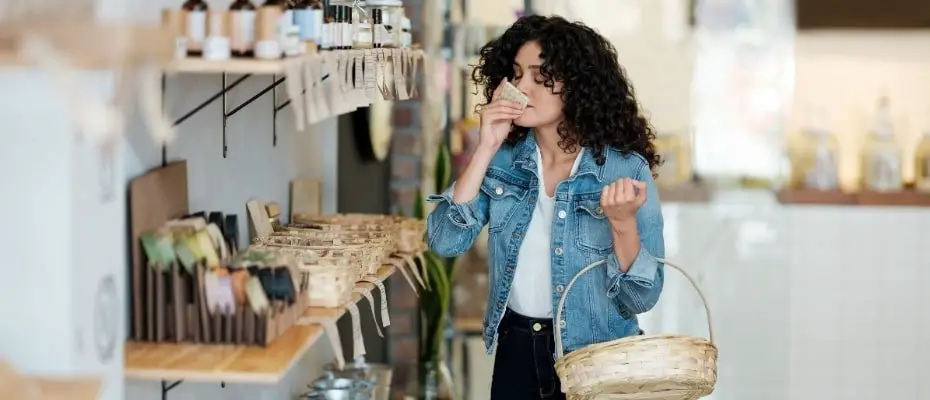
10. Liberal return policies
Have you ever purchased something you’re not quite sure about thinking you can always return it if you change your mind? And did you actually end up returning it after changing your mind?
Common sense tells us that we would return more purchases when retailers have liberal return policies. But retailers also know that shoppers are more likely to buy in the first place when such policies are in effect. The secret to the effectiveness of long return windows is in the “Endowment Effect.” This is an idea based on behavioural economics and shows people often put more value on things they own already. This concept shows that it’s a lot harder to get people to let go of an item if they feel ownership of it.
11. Speed bumps
If you’ve ever wondered why a shop aisle feels crowded, it’s not accidental. “Speed bumps” are another retail psychology trick that makes us spend more time in the store. Stores will place things like tables or racks that stick out from the aisle to get customers to slow down. The last thing retailers want is for someone to be in and out within a couple of minutes. Therefore, they arrange tables and displays to obstruct the natural walking flow of the floor plan. The slower you walk, the more items will catch your eye. And the more items catch your eye, the more likely you are to buy more.
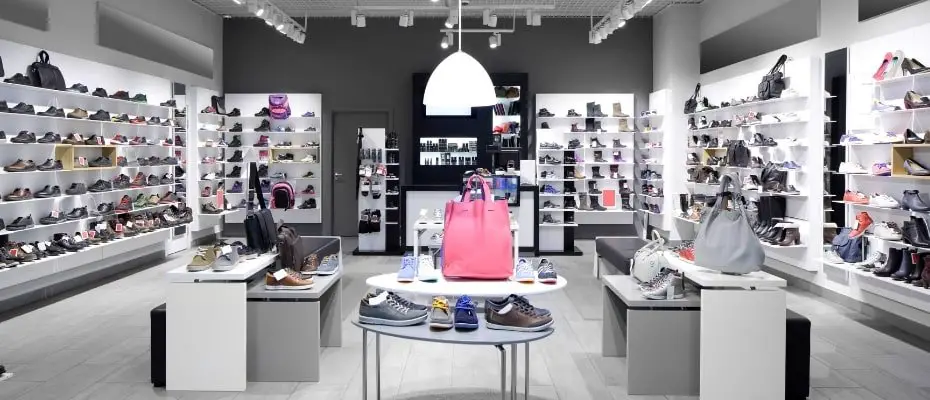
12. Placing sales items strategically
Retailers often tempt shoppers to enter their stores by putting sales items close to the entrance. This way even customers that don’t usually shop in that store might be tempted to come in for bargain hunting.
Another sneaky spot to place clearance items is near the checkout line. Retailers know how many people can’t resist this!
13. “Free” samples
Everyone loves free food! Therefore, it’s no surprise that most people take free samples when offered. This is something that retailers love too because it can massively increase their sales.
So why are free samples so effective? In short, you’re more likely to buy something when you get a free sample. This is mainly because of reciprocity. In other words, we feel the need to give something back to the person who has just given us something for free.
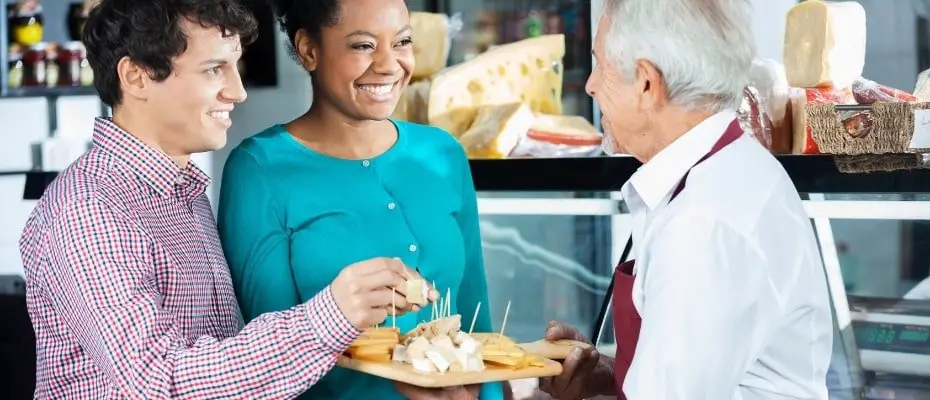
14. Carefully chosen colours
Colours can affect how we feel about a brand and even prime us to buy more than we otherwise would. In addition, colour can account for up to 85% of the reason you buy one product over another.
Different colours also have different associations and are therefore used for different purposes.
For example, colours can help stores to attract attention and encourage consumers to step into the store quickly. Colours like red and orange at the entrance tend to stand out and draw the eye, driving more customers into a store. This is why sale signs are often red as well.
In contrast, the calming effect of cool colours is associated with the encouragement of spending more. So, even if you are drawn into stores by warm hues, once inside, colours like blue and green would be the ones that will make you loosen your purse strings.
How to beat retail psychology tricks
Knowing what retailers are trying to do and how is half the battle. The other half is all about being prepared before you buy. Now that you know more about the tricks retailers use to influence your spending, you can pay more attention to your purchase behaviour. Here are some ways to beat retailer tricks:
-
Know what you want before going shopping and don’t get easily distracted. Or even better, make a shopping list and stick to it. This will help you wise up to the psychological tricks.
-
To avoid getting sucked in by pricing tricks, only purchase what you planned to purchase. Bargains are only bargains if you actually need the items.
-
Don’t buy something just because it’s “on sale.”
-
Resist spending money on things that give you instant gratification or that you simply don’t need. Instead, save the money for your long-term goals.
-
Don’t get rushed into making quick decisions because of “limited deals”. Take your time to ensure you have done your research so you know you are getting the item you want at a good price.
-
Avoid unnecessary impulse purchases by stopping and thinking about whether the item will actually make you happy or improve your life quality.
-
Keep away from window shopping or aimlessly browsing in stores altogether if you have a tendency to give in to impulse purchases.
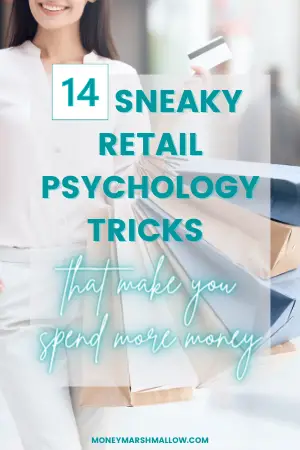
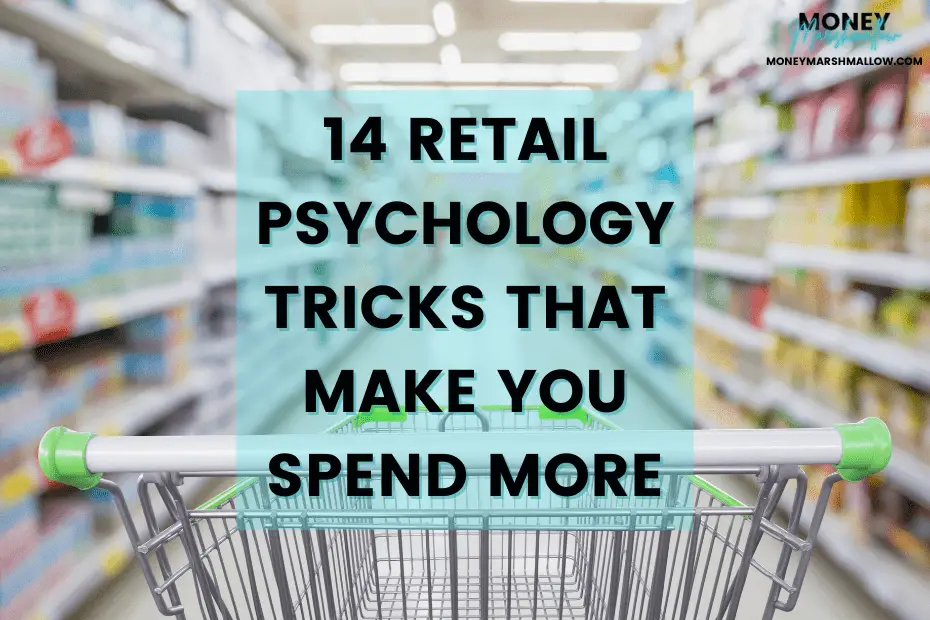
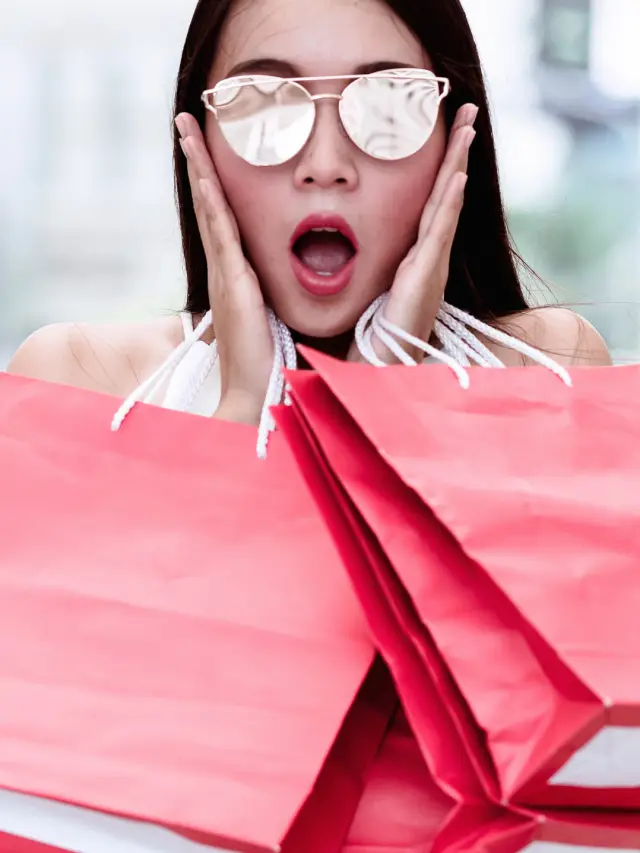
All these tricks retailers use to get your money 😯 moving items around I thought was them trying to make my shopping experience better & it turns out they wanted me to spend more
Thanks for your comment Carlyn! Yes, that’s right – moving things around will make you spend more time in the store looking for the items rather than actually improve your shopping experience.
That’s so true!! My husband keeps reminding me this fact but I just can’t stop :-((
Thanks for your comment Ruchika! Yep, it’s good to keep these in mind when shopping 🙂
This is so interesting! I like assessing which of these tricks work best on me. I definitely have a weakness for great smells even though I know they’re doing it on purpose!
Yep definitely, it’s interesting to actually pay attention to all these details when shopping!
Bunch of smart people but not tricky to me
It’s interesting how many of these are so subconscious that even people who know about these don’t necessarily realise they are being “tricked” 🙂
It’s crazy that stores use these because people usually never notice, but it’s good to be aware of the tricks they use. Great post!
Thanks for your comment! 🙂
Very interesting point about the free samples triggering appetite. I always thought this was mostly about reciprocity as you also pointed out. But I never thought that it was actually done to promote *all sales* by getting your appetite worked up. Very clever! A lot of the other ones I knew about, including the smells, but this was new to me. Thanks for sharing!
Thanks for your comment! It’s all pretty smart, isn’t it! 🙂
Fascinating! It’s so weird to think about how much of this stuff goes on without you being aware of it! A lot of these tricks definitely work on me 😂
So true! Even if you’re aware of these retail psychology tricks, it’s so easy to forget them when shopping 😉
i used to work in the retail industry,and whenever we got something new,i’d “casually” mention the new item and praise it,and believe it or not,8/10 times someone would buy it.
That’s really interesting – thanks for sharing another retail trick!
I NEVER even considered the “speed bumps” as a thing!! Honestly, they truly do slow me down (especially if it sparkles!!!!)
Haha yes! The sparklier the better (at making us slow down) 😉
Found this fascinating! I fall for scarcity tactics ALL the time!
Yep, the scarcity tactics are tricky for sure when FOMO kicks in!
I worked at retail for three years as a store manager and I can confirm all of these are true. 😀
Thanks Laura, great to get these confirmed 😉
Everyonne likes buy one get one free.
True – especially the retailers after all the profits they make from BOGO offers!
I love this! We need to be so mindful whenever we enter a store so we don’t get tricked into buying things we don’t need.
Thanks Michelle – I completely agree with you there! 🙂
These are so true! I’ve worked in the car dealership business and they do the same tactics. Especially with the pricing!
Thanks for sharing these useful tips!
Thanks Melissa, it’s always good to get these retail tricks validated by people working in different areas of retail!
These are so spot on! I’m usually a sucker for the false sense of urgency and BOGO sales. Thanks for sharing these tips and highlighting the tricks used to suck us in!
Yes, they’re so easy to fall for even when you knew about the sneaky tactics!
This is why I moved to ordering more items online.It helps me avoid a lot of these in person pitfalls.
Yes definitely, as long as you can avoid the psychological games e-commerce sites play too!
Some of these I either already recognized or learned along the way, but you’ve opened my eyes to more tricks than I ever realized! My husband always says, “It’s cheaper when you don’t buy it all!” Which is so true, and good to remember! Funny, the mental games we play! Thank you for your awesome tricks on how to beat the trickery! Pinned! 🙂
Thanks for your comment, Lindy. Your husband is 100% right, you can’t really save by spending!
I’m fascinated by this kind of psychology. Also being aware of it helps you from being seduced by it!
Yes absolutely, it’s a bit easier to avoid all the retail psychology tricks when you’re aware of them (although we all probably still fall for some of them from time to time!)
This was a really interesting read, I knew some of the tricks but I was surprised by just how many there are! I’ll be much more aware of this in future.
Thanks, Niki! There are lots of different retail psychology tricks for sure – almost feels like it’s one big psychological experiment when you walk in a shop 😀
I fall for so many of these tricks! Particularly the but one get one free. Great to trad this thank you.,
Thanks for your comment Melanie – much appreciated!
So interesting! The syllables one wasn’t one id ever considered but it makes total sense! Layout is a big one for me – I can’t cope with shops where it is a jumbled mess!
Agreed, some of these tricks are so subconscious you’d never even thin they’d make you spend more money 🙂
Haven’t previously worked in retail before, I can say that this is so accurate. Yet I still fall for it in supermarkets.
It’s crazy how easy it can be to fall for some of these supermarket tricks even when you are aware of them 🙂
I used to work in retail and we would have to bring out extra shoes and bags to entice a customer. We all hated it but it became policy to do things like that. Cringe!
That’s very interesting – thanks for sharing Emma!
Gosh! This post is spot on! Few days ago I was in our local supermarket and it seems as though they’ve just baked some baguettes. I ended up getting some which were not on my list lol
Sound familiar! My local supermarket has all the baked goods right at the entrance so the first thing you notice when you step in is the smell of fresh croissants!
The store layout one is so annoying! You have to trek throughout the whole store just for a loaf of bread!
Agreed – the layouts don’t tend to be very customer-friendly as they’ve been designed to make more money for the stores.
Great post! I am a bit gullible so often fall for these tricks. I’ve learnt to not pick up a basket if I’m only going into a shop for one thing. I am terrible with free samples – especially if you get the product free but pay postage. Love this x
Thank you Caroline! Thanks for also mentioning the free samples online, that’s a great example of an ecommerce trick! I’m looking to write more about these online tricks soon!
Thanks for sharing the info, keep up the good work going…. I really enjoyed exploring your site. They are really nice article shared!